|
  
 |
|
Five questions and answers with Colin Yasukochi, executive director of CBRE’s Tech Insights Center in San Francisco.
|
|
|
|
| FROM SITE SELECTION MAGAZINE, SEPTEMBER 2021 ISSUE |
 |
ASSOCIATION UPDATE
Just in time for IAMC’s Professional Forum in Kansas City next week, IAMC Chair considers what the future holds, and experts weigh in on managing the supply chain in the post-pandemic era.
|
|
|
|
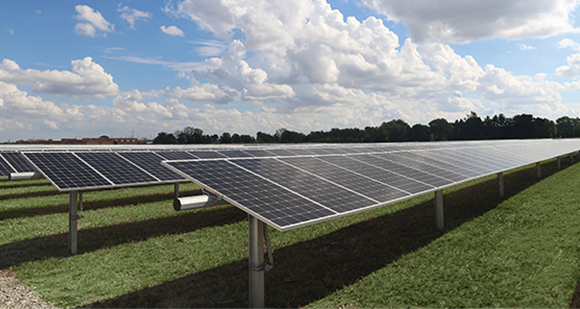 |
INVESTMENT PROFILE: INDIANA MUNICIPAL POWER AGENCY
How a member-led utility in Indiana is reaching out to the future.
|
|
| CONWAY ANALYTICS SNAPSHOT |
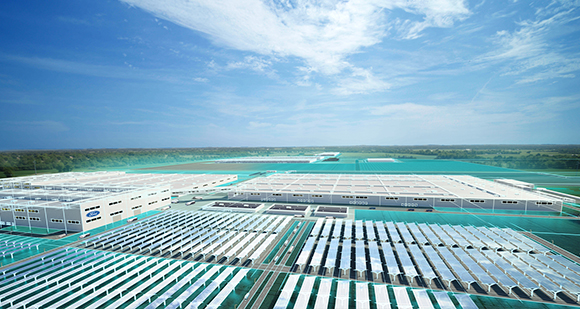 | A $5.6 billion mega campus in Stanton, Tennessee, called Blue Oval City will create approximately 6,000 new jobs. Conceptual illustration courtesy of Ford
|
It took 20 years, but the Glendale megasite in Kentucky finally got its pot of gold on Monday when Ford’s mega-plans with SK Innovation for EV and battery manufacturing in Tennessee and Kentucky were announced. The companies plan to invest $11.4 billion and create 11,000 jobs between two long-simmering megasites in Stanton, Tennessee, and Glendale. Site Selection has documented the simmer and even engaged in a bit of prognostication over all those years.
Even after it swung and missed at landing the Hyundai plant that ended up in Montgomery, Alabama in 2002, the Glendale site in 2009 was scheduled to be the home of something eerily similar to Ford’s plan: A consortium called the National Alliance for Advanced Transportation Batteries (NAATBatt) announced in April of that year that it had picked Glendale as the site for a proposed $600-million, 2,000-worker campus that would include the group’s headquarters and several li-ion manufacturing facilities. But the big plan never got the jolt it needed. Until now.
The “Blue Oval City” segment of Ford’s plan is landing on the Memphis Regional Megasite in Stanton, which has its own long history of development: Tennessee has invested $174 million to date. It was among the large industrial sites in Site Selection’s second annual “Super Sites” feature in January 2006. You may find more than a few sites from that year’s full list of megasites still available and ready for your own company’s future vision.
The Ford plan also calls to mind the original “Detroit Park” dreams of Henry Ford and Thomas Edison 100 years ago in NW Alabama. The process ultimately ended up thwarting Ford’s presidential ambitions, giving birth to that region’s TVA Reservation and to the Tennessee Valley Authority itself, which now — to come full circle — will serve Ford’s power needs at the Stanton site. — Adam Bruns
|
 | “This site in Glendale, Kentucky, once proposed for an auto assembly plant, might one day be the nexus of advanced battery manufacturing in the U.S.,” former Site Selection Senior Editor John McCurry wrote in May 2009.
|
|
  |
New York
In a project whose many aspects are being pored over by every New York news outlet, Google last week exercised its option to buy the St. John’s Terminal building that it had been leasing since 2019 from Oxford Properties, the real estate investment platform for the Ontario Municipal Employees’ Retirement System. As reported by private real estate news organization PERE, the purchase is consistent with past New York projects from the tech giant, including the $2.4 billion purchase of the 1.2-million-sq.-ft. Chelsea Market complex in 2018 and the $1.9 billion purchase of the 2.9-million-sq.-ft. property at 111 Eighth Avenue in 2010. “New York’s energy, creativity and world-class talent are what keep us rooted here and why we’re deepening our commitment with plans to purchase St. John’s Terminal,” Ruth Porat, CFO at Google and parent company Alphabet, told The New York Times. “We look forward to continuing to grow along with this remarkable, diverse city.” Watch for more on this project and others in the New York Spotlight appearing in the November 2021 issue of Site Selection.
Netherlands
Back in the land the original New Yorkers came from, food tech company ENOUGH (formerly 3F BIO) this month announced the start of the construction for its “first-of-its-kind” protein factory, thought to be the “largest new non-animal protein farm to be built worldwide.” The factory will be operational in 2022 with initial capacity to produce 10,000 metric tons a year. Jim Laird, CEO of ENOUGH, said demand for non-animal protein — covered in a July Site Selection report — is anticipated to grow by 15,000 metric tons per day for the next 5,000 days. The facility is co-located alongside the Cargill facility in Sas van Gent, the Netherlands. The location and collaboration with Cargill will ensure the most efficient feed source, as well as supporting zero-waste advantages of ENOUGH’s product, said the company. ENOUGH grows ABUNDA mycoprotein by fermenting fungi using renewable feedstocks. The investment initially creates 25 new jobs, but that is expected to double with plans for more than 50,000 metric tons of capacity by 2027. The new facility is one of 11 flagship projects which have support from the EU’s Bio Based Industries Joint Undertaking. ENOUGH’s facility has received €16.9 million in funding as part of Project Plenitude.
|
|
  |
| Site of the Week: ROWAN COUNTY, NORTH CAROLINA |
 |
|
Located in Rowan County, North Carolina, the I-85 Commerce Center offers 676,000 square feet of Class A distribution space with direct access to Interstate 85 via Exit 70. Ideally positioned in the Charlotte Metro region in the growing state of North Carolina, nearly 4 million people live within 60 miles of our community.
The building, which will be completed in May 2022, features 40-foot clear heights, 150 dock doors, 4 drive-in doors (12’ x 14’), and parking for 300 trailers and 364 cars. Available for lease, the I-85 Commerce Center is located 41 miles from Charlotte-Douglas Airport, the seventh busiest airport in the United States.
A 1.3 million person labor pool and a low cost of living combine with a pro-business environment to make the I-85 Commerce Center an exceptional location for your company. Please click the image to learn more!
|
|
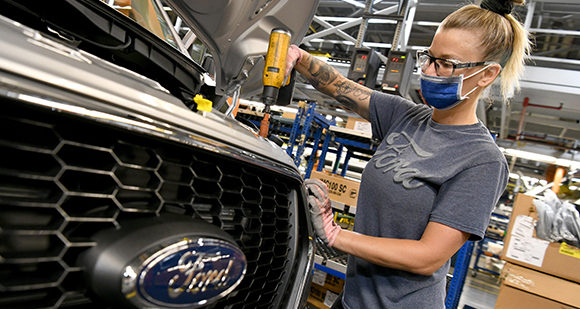
|
ADVANCED MANUFACTURING
Well before Ford’s Blue Oval made big news this week, the company’s $3.2 billion plan for EV manufacturing in North America already included a major investment in the Kansas City area.
|
|
|
|
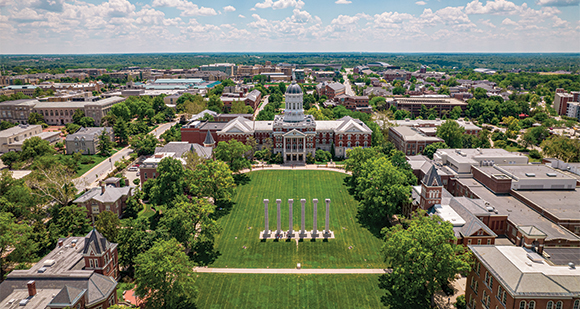 |
UNIVERSITY OF MISSOURI-COLUMBIA
How the University of Missouri in Columbia propels the entire state to new heights.
|
|
 |
REGIONAL PROFILE
Among other competitive advantages, Kansas City companies have access to 100,000 college and university students and a well-educated workforce of 1.1 million.
|
|
| SITE SELECTION RECOMMENDS |
|
|
With Manufacturing Day coming up tomorrow, the U.S. Census Bureau has created a Manufacturing Week homepage with a compilation of manufacturing statistics and data products. Another new U.S. data source worth consulting in the manufacturing context is the National Center for Science and Engineering Statistics (NCSES), a division of the National Science Foundation that serves as a clearinghouse for the collection, interpretation, analysis, and dissemination of objective data on science, engineering, technology, and R&D. The latest NCSES working paper is derived from its Nonprofit Research Activities (NPRA) Survey. Nationally, nonprofit organizations spent an estimated $22.6 billion on R&D performed in house in FY 2016 (the most recent year available), which would be equivalent to 4.2% of the total spent on R&D in the United States in 2016. “When the survey was last conducted in 1997,” Ronda Britt and John Jankowski report, “nonprofits spent $7.3 billion on R&D, or 3% of the U.S. R&D total.” Other recent reports are on topics such as the importance of trade secrets to businesses and the STEM work force. |
|

Photo courtesy of AGC of America |
Louisiana, Missouri’s Champ Clark Mississippi River Bridge replacement (pictured) was the most significant construction project of 2020, the Associated General Contractors of America announced last week. As a result, the project’s contractor, Massman Construction Co., received the association’s Construction Risk Partners Build America Grand Award, as well as the award for the best design-build civil and a Marvin M. Black Partnering Excellence Merit award. Despite working through the second-highest flood stage on record, Massman completed the bridge ahead of schedule and under budget.
In addition to the Champ Clark project, Massman, based in the Kansas City suburb of Overland Park, Kansas, received the Construction Risk Partners Build America Award for best highway and transportation renovation project under $10 million for the Norfolk Southern Railroad Grand River Bridge Emergency Repair. In late 2019, flood stage waters and debris caused by record level run-off in the Missouri River Basin destroyed Norfolk Southern Railroad’s rail line and bridge spanning the Grand River in Brunswick, Missouri. “As an important part of the railroad’s network, it was critical that the bridge be rebuilt as soon as possible,” the AGC writes. “Despite strong river currents and extraordinary levels of river debris, Massman was able to develop and implement a rapid solution. Because of their efforts, traffic resumed a mere 27 days after the failure occurred.”
|
|
|
|

